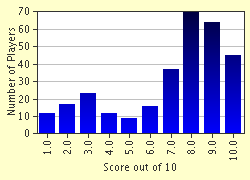Quiz Answer Key and Fun Facts
1. He's a tree-dweller who never shaves and who loves a good smoke on his everlasting cigar.
2. He's no centaur and certainly no unicorn either. When this horse-man sits down, his knees are said to be higher than his head! The only way to tame him, it is said, is to get the one golden hair in his mane.
3. This bird is no phoenix, but it's just as colorful. It is often depicted as a rooster with a huge colorful tail, and a fish dangling from its beak.
4. This mythical tiny old man with sharp teeth feeds on blood. It often lures its victims into coming close enough by taking on the form of an abandoned baby, then sinks its teeth in!
5. This old man is always depicted as squatting on top of an anthill.
6. The name of this creature has come to mean, in Hiligaynon, "a very tall person". He likes especially to stand beside tall thin poles or trees.
7. The name of this creature has come to be applied to a mimic in Hiligaynon, because it repeats every word you say! Flowing water is anathema to it, because once it touches flowing water, it will dissolve into a lot of worms. Yuckk!
8. This species of fiend is supposed to have the unique power of cutting its body in half. Then the upper part sprouts wings and flies off in search of prey, and the lower part stays behind.
9. These "people of the place" are what we call "fairies" in other countries. They inhabit forests, trees, mountains, or, in Ilonggo folklore,even your own home. They are described as fair-skinned and with a piercing beauty--- slanting dark eyes, Caucasian features, and long straight black hair. But their identifying feature? That furrow above your upper lip? They don't have them!
10. Here's the most popularized fiend in Filipino folklore. Question 8 is actually a species of this genus. The most appropriate description of this fiend, however, is "shapechanger" because it can take many forms. It can be a cat, a big black dog, or, in Ilonggo folklore, a huge pig that enters your pigpen and picks a fight with your pig in the middle of the night. It can be a child, a beautiful girl, or an old woman. And it especially likes to eat people.
Source: Author
layadriel
This quiz was reviewed by FunTrivia editor
agony before going online.
Any errors found in FunTrivia content are routinely corrected through our feedback system.


